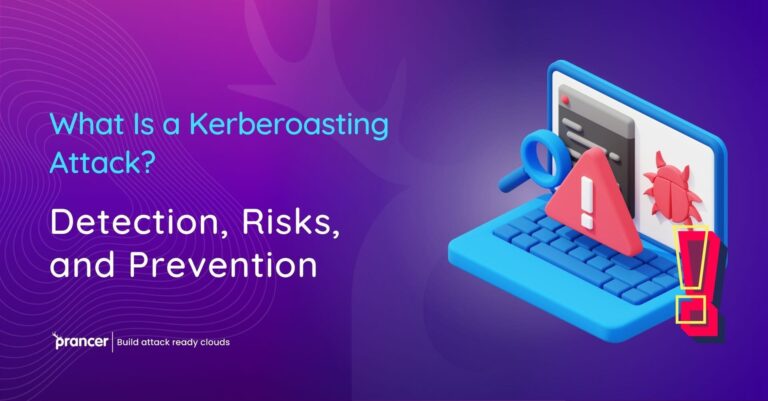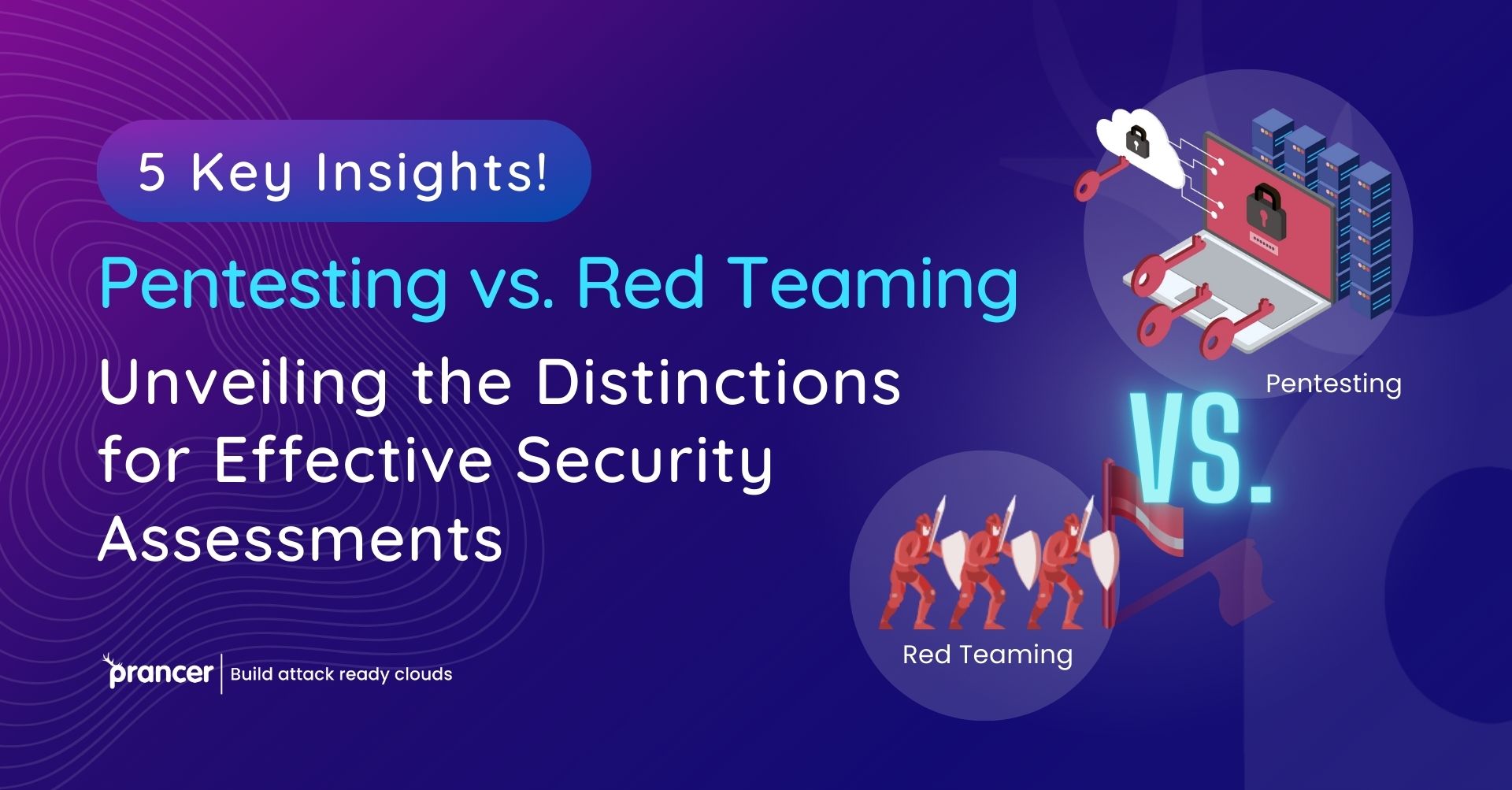

The pentesting vs red teaming issue presents itself in a security world against new threats on a daily basis. Though both strategies are important, one must understand that they have very different roles to play and these differences must be prioritized for maximum efficacy This post will talk about the differences between pentesting and red teaming. And how Prancer automates penetration testing for these approaches.
As we delve into pentesting vs red teaming, Prancer’s role as a cybersecurity partner cannot be overlooked. Prancer’s automated penetration testing tools enhance both pentesting and red teaming by swiftly and accurately identifying vulnerabilities. Navigating the complex terrain of pentesting vs red teaming becomes more accessible with Prancer’s technology, ensuring precise vulnerability identification.
Prancer’s automated penetration testing stands as a cornerstone in the pentesting vs red teaming debate. This automated testing mimics real-world attacks, identifying vulnerabilities across systems, bridging the gap between the specific approach of pentesting and the comprehensive outlook of red teaming. Automated penetration testing by Prancer ensures a clear understanding of the threat landscape.
Prancer’s automated penetration testing solutions further the effectiveness of pentesting vs red teaming. Automation enables professionals to identify vulnerabilities more efficiently and reinforces the defenses against evolving threats. In the landscape of pentesting vs red teaming, Prancer stands as a vital ally.
The distinction between pentesting and red teaming is often contested in a complex terrain of cybersecuirty and knowing their finer roles is paramount. In this section of my blog, I will attempt to demonstrate how Prancer’s automated pen-testing addresses the discrepancy between these techniques. Unlike pentesting that aims only at identifying vulnerability points, red teaming is broader and simulates several attack types in different vectors. Through its specificity and speed in spotting vulnerabilities, Prancer’s technology improves both strategies regarding vulnerability assessments. Through incorporation of Prancer’s automatic techniques, organization can effectively deal with issues related to cyber security while at the same time maintaining an extensive line of defense that is compatible with penetration testing and red teaming approaches. The combination of approaches supported by Prancer modern technologies is critical for hardening existing organizational cyber defense with the constantly changing security space.
In the complex world of online safety, telling whether a pentest or red team is being done is important for good defense plans. Pentesting looks for certain weaknesses in systems by simulating attacks. It often uses Prancer’s automatic testing to make these tests stronger. On the other hand, red teaming uses a wider method. It copies different kinds of big attacks happening at once to see how prepared an organization is for security issues. This includes looking into social tricks and threats from inside the company itself. Prancer is important in this picture because its automated tools for checking if something can be broken make both plans better. They join the careful finding of weaknesses from pentesting with big, real-world tests like those done by red teamers who check security systems. Prancer’s technology mix makes sure a better and more quick way to check security. It connects well with growing issues in cybersecurity.
Integrating Automated Penetration Testing in Cybersecurity: Pentesting and Red Team: The Contributions of Prancer
Introduction to Cybersecurity Challenges: But with the thriving digital landscape nowadays, it becomes crucial to adopt proper cybersecurity. As threats grow in complexity, organizations need to identify a way of implementing pentesting and red team techniques.
Defining Pentesting and Red Teaming: Pentesting attacks focus on the system in terms of identifying where vulnerabilities can be found. It is a technological method that targets technical weaknesses. Instead, red teaming looks at the system holistically and presents varied threat replicas as complex real-life threats attempt to challenge an organization’s defensive limits.
Automated Penetration Testing: The current cybersecurity approaches are being transformed through Prancer’s automated penetration-testing. This solution makes the entire cyberattack simulation process simpler and more elaborate.
Revolutionizing Pentesting with Automation: The automated tools that Prancer offers make pentesting better, by allowing one to quickly identify and take advantage of known vulnerabilities. This not only helps to speed up pentesting, but also allows for greater accuracy and depth.
Expanding the Scope of Red Teaming: Prancer’s automated penetration testing tools seemingly help to move towards more advanced red teaming, and possibly closer to reality in terms of a complex multi-faceted digital attack; this allows organizations the ability for further evaluations on readiness
Prancer’s Distinctive Contribution: In the realm of cybersecurity, it is possible to note that Prancer has developed products which have reinforced pentesting and red team testing. Providing an improved, faster detection of the security vulnerabilities it incorporates automatic technology for penetration testing.
Synergizing Pentesting and Red Teaming: In such a manner, organizations can integrate Prancer’s automated penetration testing method with the special pentestering orientation and wider red team perspective. This creates a cyber defense that is more robust and dynamic.
Bridging Security Methodologies: Prancer’s technology in a quiet way makes red teaming close to precise syn of penetration testing. This creates a multilayered and sophisticated defensive stance that is required in today’s cyber threat landscape.
The Future of Cybersecurity with Prancer: Prancer’s automated penetration testing is not only reactive but also proactive addressing future threat vectors. In the same way, this proactive approach is required to remain one step ahead of cyber security.
Automated Penetration Testing in Practice: Prancer imitates any types of cyberattacks from simple spearphishing to advanced ransomware, indicating both defensive and human-factor breaches.
Practicality and Efficiency: It is emphasized on how helpful Prancer’s automatic tools are due to the fact that they do specific evaluations in just a few minutes for manual testing, which takes longer, thus allowing frequent security assessment.
Customization and Adaptability: While Prancer’s solutions do not suit every use case, they indeed are highly customizable and can easily be modified to meet the particular needs of diverse enterprises with a specific threat landscape.
Enhancing Incident Response: A crucial component that enhances the organization’s incident response strategies is automated penetration testing. In this way, the effectiveness of response protocols can be increased through identifying breach points using Prancer’ toolset.
Training and Awareness: Yet more importantly, the automated penetration testing by Prancer acts as a tool for training that enables IT personnel to train and verify best practice in cybersecurity.
Compliance and Regulatory Adherence: In an era where data protection and privacy are a must, Prancer automates penetration testing to guarantee the effectiveness of organizations in taking care that they comply with these regulatory requirements.
Continuous Improvement in Security Posture: Automated penetration testing is an ongoing process. Prancer allows organizations to continuously re-assess and improve their security situation by altering it once new threats are identified.
Cost-Effectiveness of Automation: Prancer improves integrity practice by automating penetration testing while reducing costs relative to manual approaches for this process.
Conclusion: One of the most significant innovations in cybersecurity is automated penetration test by Prancer that was incorporated for both pentesting and red teaming processes. It highlights the need for agile, digital solutions that address cyber threats’ speed of change and their increasing complexity.
Looking Ahead: The importance of automated penetration testing is likely to increase with the evolution of cyber threats. Yet Prancer’s ongoing effort to develop this technology makes it one of leading trailblazers in defining the cybersecurity future.
Final Thoughts: In short, Prancer’s automated penetration testing tools not only enhance the conventional security review but act as a gateway between pentests and red teasers to deliver an end-to-end solution for cybersecurity threats.
The pentesting vs red teaming discourse is central to forming a robust cybersecurity strategy. Understanding their distinctions, coupled with Prancer’s role in automated penetration testing, is instrumental. Embracing Prancer’s technology enhances both pentesting and red teaming, streamlining security assessments. With Prancer’s guidance, the pathway to effective security, whether through pentesting or red teaming, is clear and resilient. In the rapidly changing world of cyber threats, the discussion of pentesting vs red teaming remains vital, and Prancer’s contributions in this arena continue to be instrumental.
